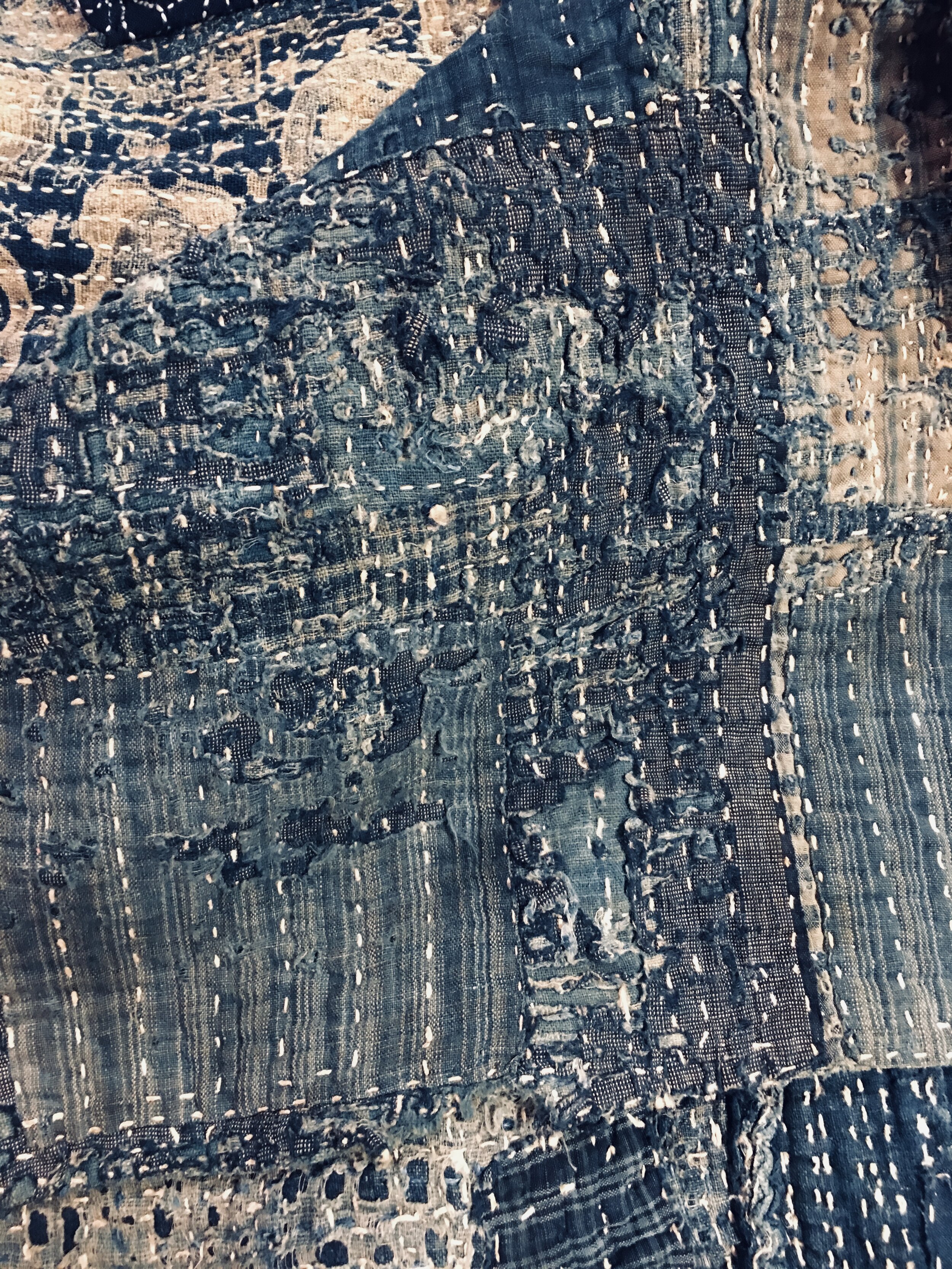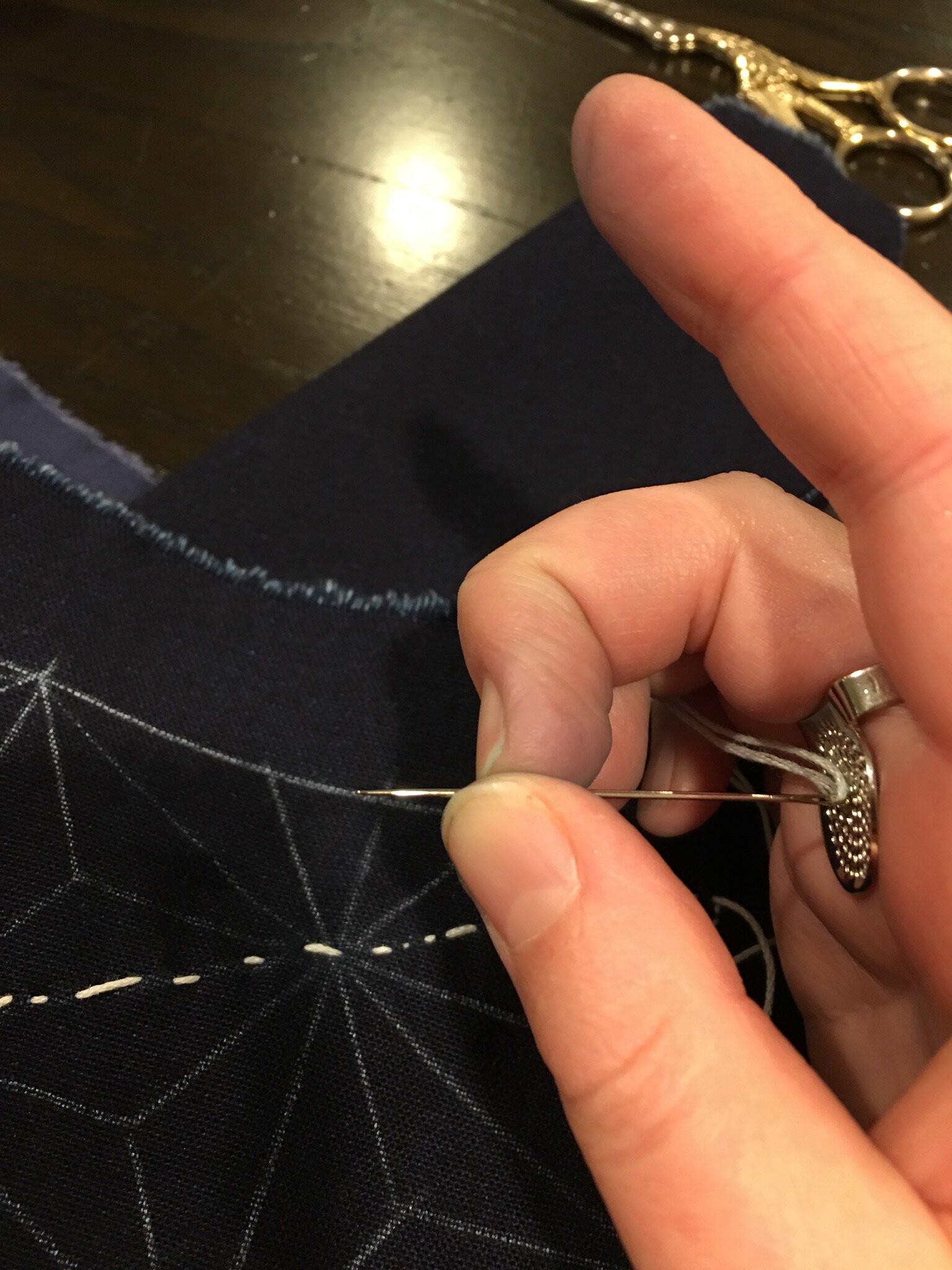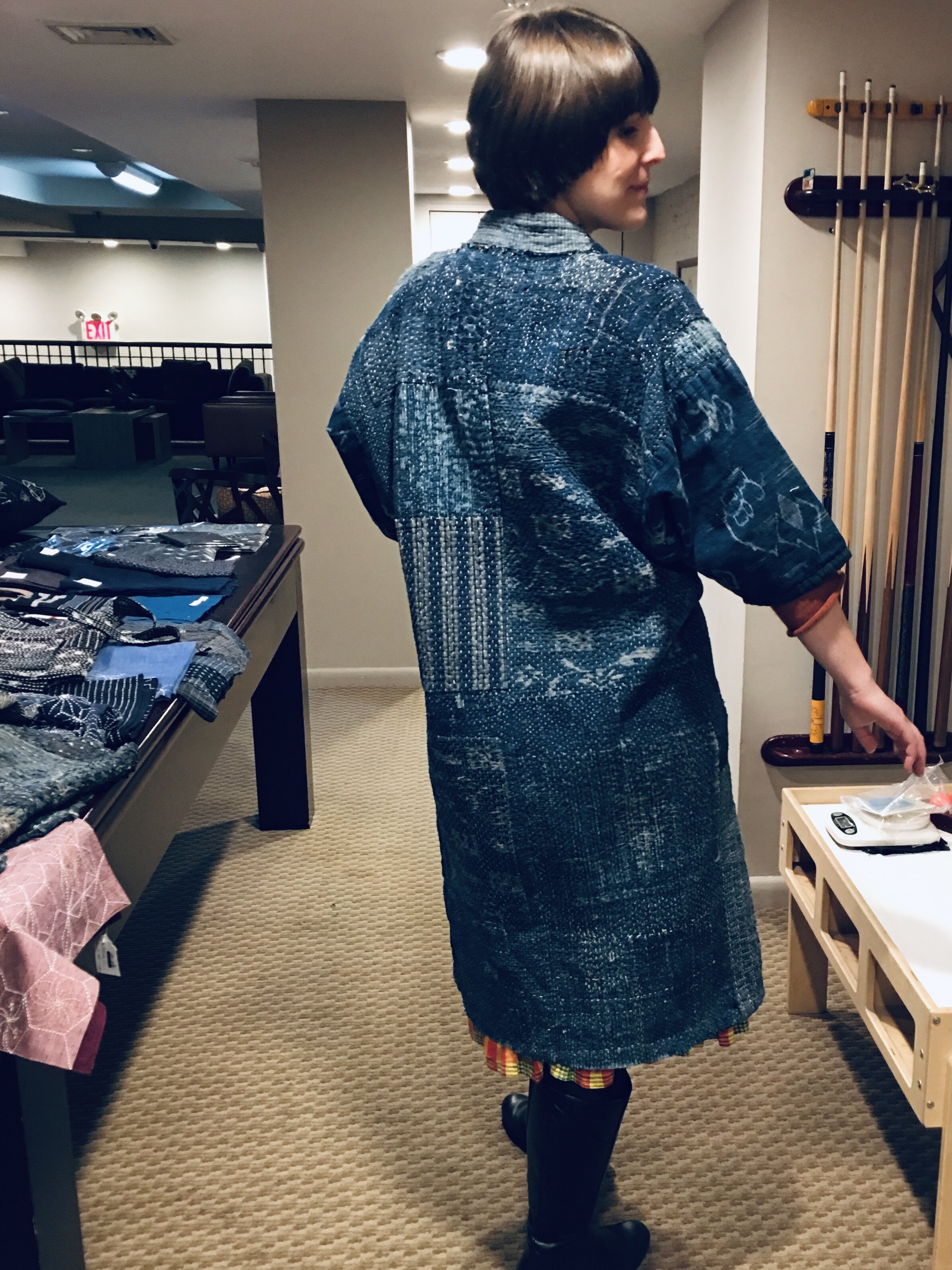More than a stitch.

Sashiko began as a practical form of reinforcement stitching in Japan during the Edo period (1603-1868), when keeping in service the few pieces of clothing a peasant farmer had in their possession was critical.
The stitch was used to add strength to threadbare patches and to join other scraps of fabric to the garment, a process which could happen countless times to the same piece. It is from this constant mending that the Boro textile, with its life after life layers, came into existence. Over time, the stitch evolved into a decorative art form of patterns and motifs inspired by the surroundings.
Sashiko and boro have captured the imagination of many in recent years. At first glance, the sashiko stitch looks like a simple running stitch, which involves gathering a few stitches on the needle before pulling it through the fabric, but as it turns out, sashiko is much more than a stitch.
A practice.

During a workshop held in Tribeca, New York, 3rd generation master sashiko artist Atsushi Futatsuya demonstrated the traditional posture of sashiko and unshin, or needle movement, which allowed him to glide through the fabric at a quick pace. The movement is facilitated in part by the use of a special thimble, a long needle, and the specific position of the fingers toward the end of the needle.
When Atsushi practices sashiko, he rocks the needle back and forth, maintaining the grip of his middle finger on the underside of the fabric and thumb on the top towards the tip, while using the thumbnail on his opposite hand to control the movement. He uses the thimble to nudge the back end of the needle forward until, gathering as many as 30 stitches, he pulls on the fabric to complete the run and smooths the stitches out before continuing.
It is mesmerizing to watch and a bit bewildering at first. But the more you watch, the more it makes perfect sense.
“Sashiko is more than making one perfect stitch.”
If we pause to consider the origins of the practice in Japan, it would have been natural to develop a technique that favored economy of motion to tackle as much mending as quickly and effortlessly as possible. As the hands would automatically know what to do, it would leave the mender free to relax into the movement if alone, or engage in social banter if with a group.
The goal was not to create a perfect stitch, but rather to embrace the organic result from the rhythmic movement of the needle. As the form evolved from mending to decoration, the practice of sashiko continued from one generation to the next, and, it is safe to say, it lives on in the capable hands of the Futatsuya family.

An example of his incredible artistry can be found in his living work-in-progress boro jacket, which he invited us to try on. To experience the comforting weight and feel of the special garment as it hugged the shoulders, and to have been able to learn the story behind the artist and the stitching, was truly an honor.









